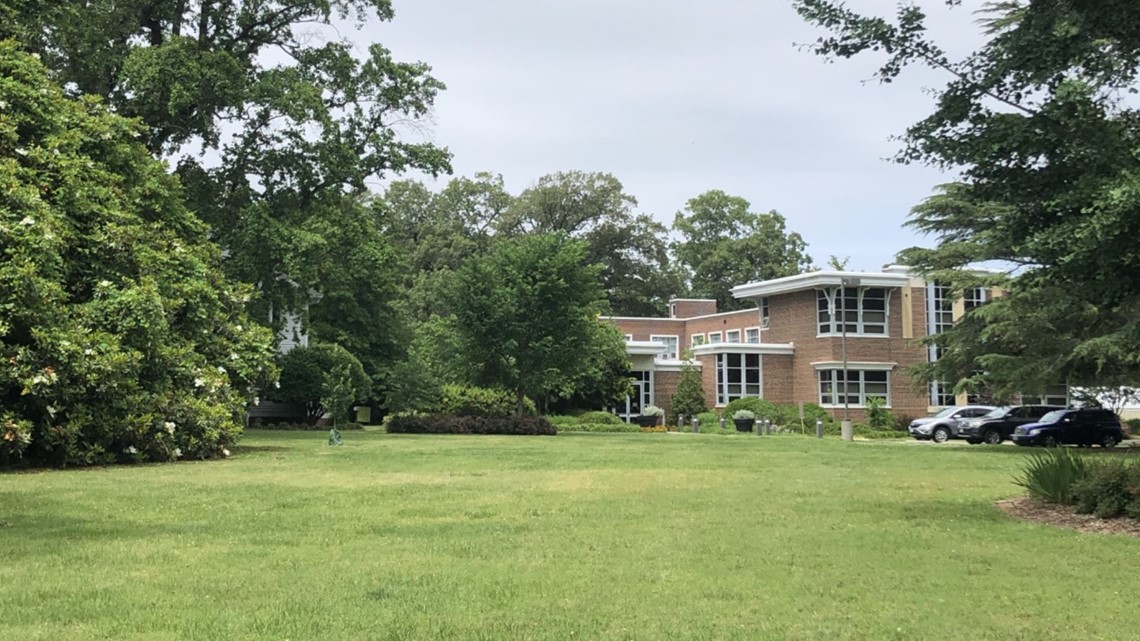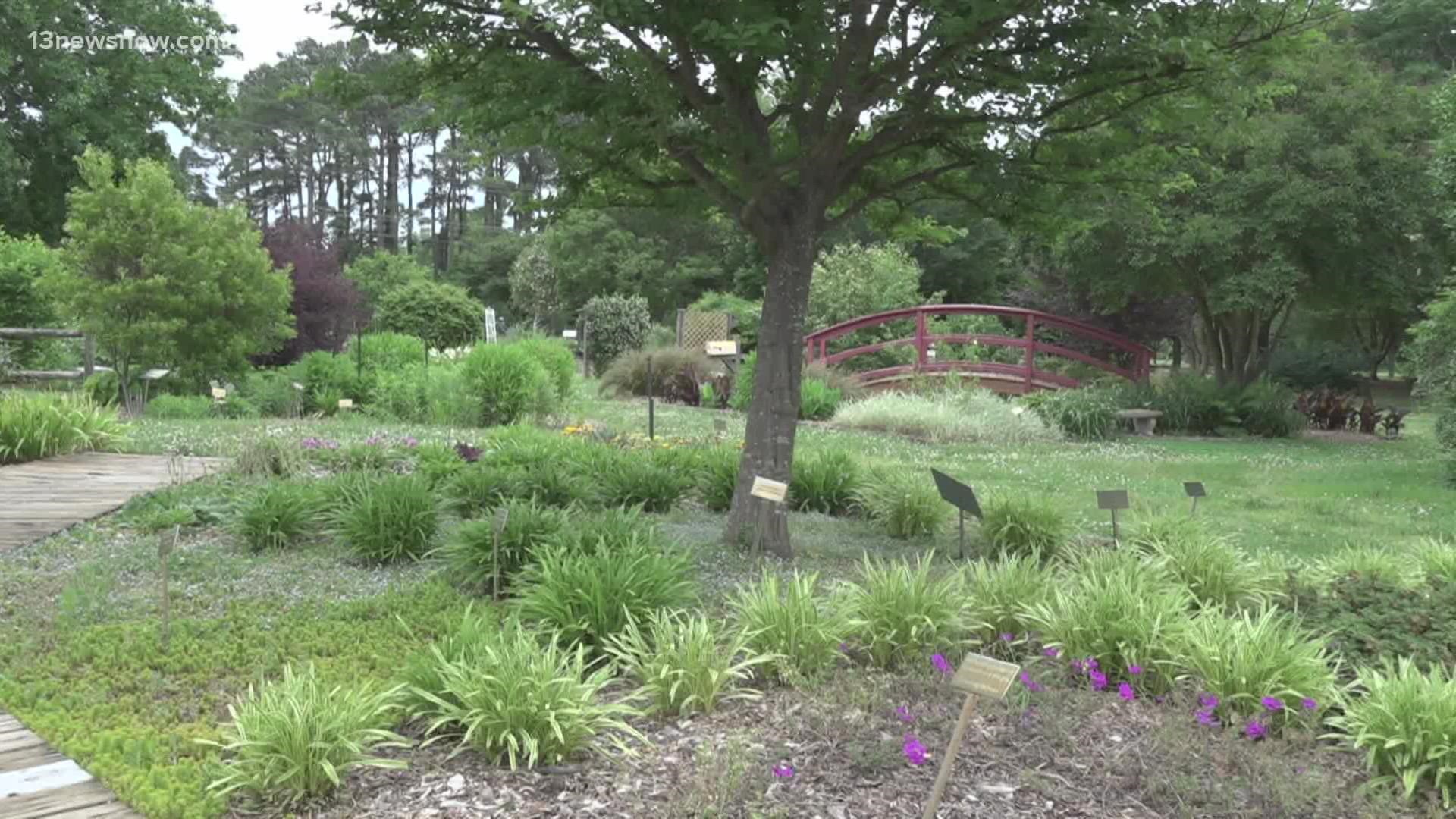VIRGINIA BEACH, Va. — Flooding isn't just a nuisance in Hampton Roads. It can cause long-lasting environmental and economic problems.
"Erosion is basically the wearing away of the soil. And so it can be done by wind or by water, and here in Hampton Roads, we have both situations, especially with some of our coastal storms — our nor'easters and hurricanes — we get a lot of erosion along shorelines. And that's property that people are losing, and you just can't get it back."
That's how Dr. Laurie Fox, a horticulture associate and researcher at the Virginia Tech Agricultural Research and Extension Center in Virginia Beach, puts it.
The center is one of 11 research labs associated with the extension program throughout Virginia. She's the local expert on landscaping to stop erosion.
The key to stopping your dirt from washing away is what's called a "buffer," any plants that a person puts on the banks of a body of water.
"We have two essential types of buffers here, the freshwater buffer ... and then if you live on brackish or saltwater, you still have that area of vegetation, but the plants are very different, because they have to tolerate the salt," Fox explained. "Most of the time, that's referred to as a 'living shoreline.'"
And even as the expert, Fox said there's a lot of flexibility when it comes to protecting your property.
"It really depends on your location, and what the site conditions are, and what the user wants, so you have to blend all of those things and put them together sort of like the pieces of a puzzle," she said. "But it could be something as simple as having a very dense, healthy stand of turf, so you don't have areas for bare ground, or it could be a ground cover, if it's an area where turf doesn't necessarily grow."
If you're looking for a major change, you could create canopy layers, which would incorporate plants of different heights to soften the fall of rainwater. That could be something like a tall magnolia tree, over a mid-height bush, bordered by wide-leaf hostas, surrounded by a bed of sedum. Then, the rain would have to push through several layers of foliage to affect the ground.
"Those canopies of plants soak up a lot of the water, and it never reaches the ground in order to run off. But it also softens the rain as it comes down, and gives it a better chance to soak in," Fox said.
The less erosion in Hampton Roads, the less property loss for you, and the less pollution for the Chesapeake Bay.
"Sediment is one of the top three nutrients -- nitrogen, phosphorous and sediment -- top three pollutants that are regulated, that we have to reduce the amounts of them going into the Chesapeake Bay," she explained. "It's better to manage it in small places in the landscape than try to manage it after it gets into the Chesapeake Bay."
Planting to prevent erosion comes with a lot of choices, but Fox said the best plant you could invest in would be an evergreen perennial. That way, they're still working their magic through the winter months, and you get the benefits of fibrous root systems that tend to come with perennial plants.
"Your woody plants, like your shrubs and trees, they tend to have root systems that go deeper in the ground, which is good, but they're not as fibrous. They don't tend to hold that top layer of soil as well," Fox said.
She said more plants are tolerant of short-term flooding than people would expect.
AREC's public gardens on Diamond Springs Road show people some easy plants that can help keep your soil where it belongs.


However, if you really can't get anything to grow in an area prone to heavy rain, Fox said mulching that area could make a difference. Anything works better than bare ground.
Here are some plants Dr. Fox pointed out as options for locals:
Tolerant Virginia freshwater buffer plants
- Aaronsbeard St. Johnswort
- Ajuga
- Asiatic jasmine
- Big Bue Lilyturf cultivars
- Bugleweed
- Canadian Wild Ginger
- Candytuft
- Creeping Phlox
- Creeping Juniper
- Japanese Garden Juniper
- Japanese Pachysandra
- Helleborus
- Hosta cultivars
- Ice Plant
- Lamb's Ear
- Liriope
- Strawberry begonias
- Sedum
- Thyme
- Verbena
- Wild Ginger
Virginia saltwater living shoreline plants:
- American Beachgrass
- Butterfly Weed
- Common Yucca
- Eastern Prickly-pear
- Grayfeather Blazing Star
- Knotroot foxtail grass
- Little Bluestem
- Olney Threesquare
- Saltmarsh Bulrush
- Saltmarsh Cordgrass
- Saltmeadow Cordgrass
- Seaside Goldenrod
- Sea Rocket
- Shore Juniper
- Swamp Rose-mallow
- Switchgrass

